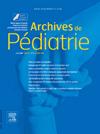Frequency and management of rod fractures following minimally invasive bipolar fusionless surgery in neuromuscular scoliosis patients
IF 1.3
4区 医学
Q3 PEDIATRICS
引用次数: 0
Abstract
Introduction
Neuromuscular scoliosis (NMS) is associated with an abnormal muscle tone. Traditional conservative treatments, with the historical practice of early posterior fusion, have proven ineffective. Recently, growth-sparing techniques have gained traction owing to their ability to maximize trunk height. However, these techniques have a substantial risk of complications, particularly rod breakage, with reported incidence rates ranging from 15 % to 42 %. The objective of this study was to conduct a descriptive analysis of NMS patients who experienced rod breakage following the minimally invasive fusionless surgery (MIFS) technique.
Methods
This was a single-center, retrospective study that included all NMS patients who underwent surgery between January 2015 and January 2021 and subsequently presented with rod breakage after MIFS. The MIFS technique is based on proximal fixation with double hook claws made of pedicular and -sus laminar hooks and pelvic fixation with iliosacral screws.
Results
The mean follow-up was 5.2 ± 2.2 years. The mean dominant etiology of NMS was cerebral palsy (67 %). Of the 217 patients who underwent surgery, 15 (6.9 %) developed rod breakage. Rod breakage occurred 2.7 ± 1.3 years after the initial surgery. Four cases of rod fracture recurrence were reported in ambulatory patients with dystonia or hyperactivity.
Conclusion
Compared with other fusionless techniques, the minimally invasive bipolar technique appears promising for patients with NMS, with a lower rate of rod breakage. We recommend the use of a four-rod construct for ambulatory patients or for those with dystonia or hyperactivity.
神经肌肉性脊柱侧凸患者接受微创双极无融合手术后发生杆骨折的频率和处理方法。
简介神经肌肉性脊柱侧凸(NMS)与肌肉张力异常有关。传统的保守疗法和早期后路融合术已被证明无效。近来,由于能够最大限度地增加躯干高度,保全生长技术受到了追捧。然而,这些技术有很大的并发症风险,尤其是杆断裂,据报道发生率从 15% 到 42% 不等。本研究的目的是对采用微创无融合手术(MIFS)技术后出现杆断裂的 NMS 患者进行描述性分析:这是一项单中心回顾性研究,纳入了所有在2015年1月至2021年1月期间接受手术并在MIFS术后出现杆断裂的NMS患者。MIFS技术的基础是使用由足钩和髂板钩组成的双钩爪进行近端固定,并使用髂骶螺钉进行骨盆固定:平均随访时间为 5.2 ± 2.2 年。NMS的主要病因是脑瘫(67%)。在接受手术的 217 名患者中,有 15 人(6.9%)出现了螺杆断裂。连杆断裂发生在初次手术后 2.7 ± 1.3 年。据报道,有四例肌张力障碍或多动症的卧床患者再次发生了连杆断裂:结论:与其他无融合技术相比,微创双极技术似乎对NMS患者很有前景,其杆折断率较低。我们建议非卧床患者或肌张力障碍或多动症患者使用四杆结构。
本文章由计算机程序翻译,如有差异,请以英文原文为准。
求助全文
约1分钟内获得全文
求助全文
来源期刊

Archives De Pediatrie
医学-小儿科
CiteScore
2.80
自引率
5.60%
发文量
106
审稿时长
24.1 weeks
期刊介绍:
Archives de Pédiatrie publishes in English original Research papers, Review articles, Short communications, Practice guidelines, Editorials and Letters in all fields relevant to pediatrics.
Eight issues of Archives de Pédiatrie are released annually, as well as supplementary and special editions to complete these regular issues.
All manuscripts submitted to the journal are subjected to peer review by international experts, and must:
Be written in excellent English, clear and easy to understand, precise and concise;
Bring new, interesting, valid information - and improve clinical care or guide future research;
Be solely the work of the author(s) stated;
Not have been previously published elsewhere and not be under consideration by another journal;
Be in accordance with the journal''s Guide for Authors'' instructions: manuscripts that fail to comply with these rules may be returned to the authors without being reviewed.
Under no circumstances does the journal guarantee publication before the editorial board makes its final decision.
Archives de Pédiatrie is the official publication of the French Society of Pediatrics.
 求助内容:
求助内容: 应助结果提醒方式:
应助结果提醒方式:


